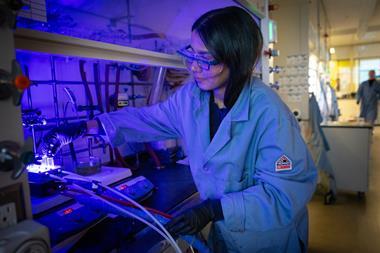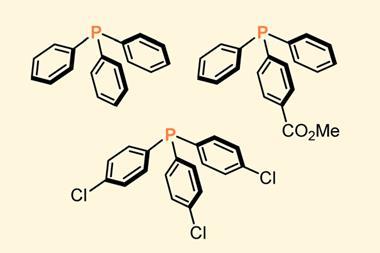Researchers in Japan have designed a mechanochemical protocol for the Birch reduction that works in air, at room temperature. It uses d-(+)-glucose to disperse sodium lumps into small, reactive particles, which promote the reaction, whilst avoiding the use of liquid ammonia.1
Conventional Birch reductions use an electron-rich solution of alkali metals in an amine solvent alongside an alcohol-based proton source to convert arenes into 1,4-cyclohexadiene derivatives. Sodium-based Birch reductions typically use lumps of sodium metal stored in mineral oil. However, such protocols also require liquid ammonia as the solvent, which is toxic and difficult to handle. ‘It also needs a high level of experimental skill to carry it out,’ explains Hajime Ito of Hokkaido University. Several ammonia-free methods that instead use activated sodium sources, such as modified sodium dispersions, have been explored in recent years. These activated sodium sources enable efficient reduction through their large surface area, but their limited shelf-life and substantial cost limit potential for large-scale synthesis.
Now, a team led by Ito has developed a ball-milling method that activates sodium lumps in situ and used them in Birch reductions. Sodium is a very soft metal and would usually be difficult to grind into a powder. To resolve this, the researchers added d-(+)-glucose to solidify the reaction mixture and allow efficient mechanical activation. Glucose ‘also serves to slowly supply protons to the reduced substrate’, explains Ito.
‘The work is advancing a recently emerged field of mechanochemical, solventless reactivity of alkaline metals, showing how inexpensive and readily-available metallic sodium can be engaged in a highly popular organic transformation,’ comments Tomislav Friščić, a mechanochemistry expert at the University of Birmingham, UK.
Duncan Browne, who develops mechanochemical processes for organic chemistry at University College London, UK, says the protocol solves ‘the malleability problem’ of activating alkali metals like sodium, by using a reactive grinding auxiliary, ‘which allows reactants to accept the energy from the ball as it’s bashing around inside the ball mill’.
Browne also remarks that it’s difficult to synthesise 1,4-cyclohexadiene derivatives via processes other than a Birch reduction. ‘If they have improved the accessibility to that reaction, then I think that’s only a good thing, and mechanochemistry has really allowed them to do this.’
Sodium lumps ‘can be weighed and used immediately after wiping the surface oil with paper, making them easy to work with’, says Ito. They are also more cost-effective than traditional activated sodium sources, and more sustainable than lithium, which Ito’s team tested in a mechanochemical Birch reduction protocol last year.2 However, as sodium is pyrophoric and the Birch reduction is an exothermic reaction, Ito says users should consider the risk of fire before scaling it up.
‘The ease and operational simplicity with which sodium metal can be used for this type of reactivity is surprising and the methodology itself opens interesting new mechanistic questions and exciting opportunities,’ adds Friščić. ‘One of them is the potential mechanistic role of glucose and related molecules in freeing metal surfaces of metal oxide and activating the metal by complexation. Another one is the possibility of using the inherent chirality of d-(+)-glucose to perhaps develop effective mechanochemical approaches to enantioselective, asymmetric Birch-type reactivity, without requiring amine solvents or liquid ammonia temperatures.’
References
1 K Kondo, K Kubota and H Ito,Chem. Sci., 2024, DOI: 10.1039/d3sc06052g
2 Y Hao, K Kubota and H Ito, Angew. Chem., Int. Ed., 2023, 62, e202217723 (DOI: 10.1002/anie.202217723)













No comments yet